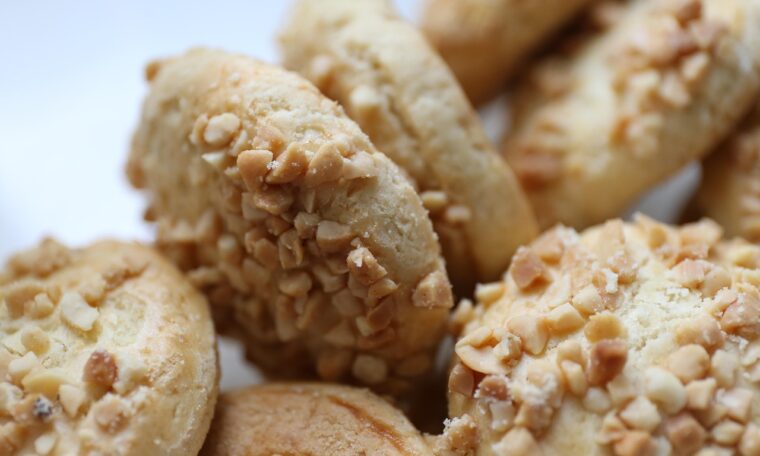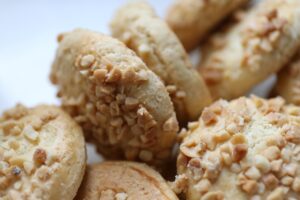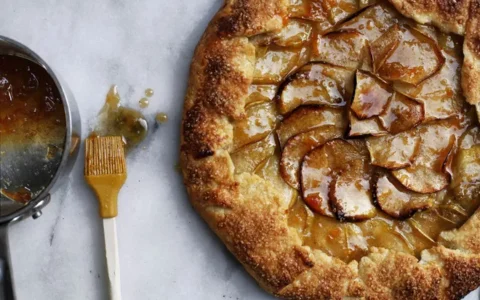
Win Your Next Pageant
Thank you for reading this post, don't forget to subscribe!Get Pageant Questions Written By A Miss Universe Judge

Buttery Shortbread Recipe – A Crumbly
Tradition!
Few cookies embody simplicity and sophistication quite like shortbread—its delicate crumb, rich butteriness, and subtle sweetness have made it a global icon of tea-time indulgence. With roots stretching back to medieval Scotland, this humble yet luxurious biscuit began as “biscuit bread” (twice-baked bread rolls) before evolving into the crumbly delicacy we know today. More than just a cookie, shortbread represents centuries of culinary refinement, where quality ingredients and precise technique transform flour, butter, and sugar into edible perfection.
From Medieval Sustenance to Royal Favorite
The story of shortbread is deeply woven into Scottish culture:
- 12th Century: Originated as “biscuit bread,” a thrice-baked barley bread sweetened with spices.
- 16th Century: Mary, Queen of Scots refined the recipe, adding butter (a luxury at the time) and shaping it into petticoat tails (wedge-shaped rounds).
- 19th Century: Walkers Shortbread, founded in 1898, popularized it globally.
- Modern Day: Protected under EU law as a “Traditional Specialty Guaranteed” (TSG) product.
Originally reserved for holidays like Hogmanay (Scottish New Year), shortbread’s magic lies in its purity—traditionally just 1 part sugar, 2 parts butter, 3 parts flour—and its ability to showcase premium butter’s flavor. ownthatcrown.com
The Science of Shortness: Why Technique Matters
What makes shortbread uniquely melt-in-your-mouth?
1. Fat’s Role
- High Butter Content (1:2 flour-to-butter ratio): Coats flour proteins to prevent gluten formation = tender “short” texture.
- Cold Butter: Creates steam pockets during baking for lift.
2. Sugar Chemistry
- Granulated Sugar: Adds slight crunch; superfine yields smoother texture.
- No Eggs or Leavening: Pure richness without puffiness.
3. Baking Precision
- Low-and-Slow (300°F/150°C): Ensures even cooking without browning.
- Pricking Dough: Prevents air bubbles.
Classic Scottish Shortbread Recipe
Crumbly, buttery, and just sweet enough—perfect with tea or gifting!
Prep Time: 15 mins (+ 30 mins chilling)
Cook Time: 40-45 mins
Yield: 24 fingers or 1 large round
Equipment Needed (Amazon Deals, Buy Now, Click On Link Below)
- Food Processor
- Electric Mixer
- Stand Mixer (with Paddle)
- 8-inch (20cm) Square Pan or Round Cake Pan
- Parchment Paper
- Dough Scraper
- Fork (for docking)
- Cooling Rack
Ingredients
- 1 cup (225g) unsalted butter, room temperature
- ½ cup (100g) granulated sugar
- 2 cups (250g) all-purpose flour
- ¼ cup (30g) rice flour* (or cornstarch)
- ½ tsp salt
- 1 tsp vanilla extract (optional)
*Rice flour ensures extra tenderness
Step-by-Step Instructions
1. Cream Butter & Sugar
- Beat butter and sugar on medium until pale and fluffy (~3 mins).
- Mix in vanilla (if using).
2. Add Dry Ingredients
- Whisk flour, rice flour, and salt.
- Gradually add to butter mix on low until just combined (dough will be crumbly).
3. Shape & Chill
- Press dough evenly into pan. Prick all over with a fork.
- Chill 30 mins (prevents spreading).
4. Bake
- Preheat oven to 300°F (150°C).
- Bake 40-45 mins until pale golden.
- Score into fingers/wedges while warm; cool completely in pan.
Pro Tips
✔ Butter Quality: Use European-style (82% fat) for best flavor.
✔ Texture Control: For sandy texture, rub butter into flour by hand.
✔ Storage: Keeps in an airtight container for 3 weeks (flavors deepen).
Troubleshooting
- Too Crumbly? Dough was overworked—handle minimally.
- Burnt Edges? Oven too hot; use an oven thermometer.
Dust with sugar for a traditional finish!
Why Shortbread Endures
- Versatility: Adapts to flavors (lavender, citrus zest, chocolate dip).
- Cultural Symbol: Gifted at weddings (Scottish “favors”) and holidays.
- Timeless Appeal: Equally at home in a tin or Michelin-starred restaurant.
Ready to Bake? This recipe honors tradition while demystifying the process. Whether you’re a novice or a pro, the magic of shortbread lies in its simplicity.
Fun Fact: The world’s largest shortbread measured 49 feet (15m) long! Will yours be next? 🎉



 Subscribe to Our RSS Feed
Subscribe to Our RSS Feed



